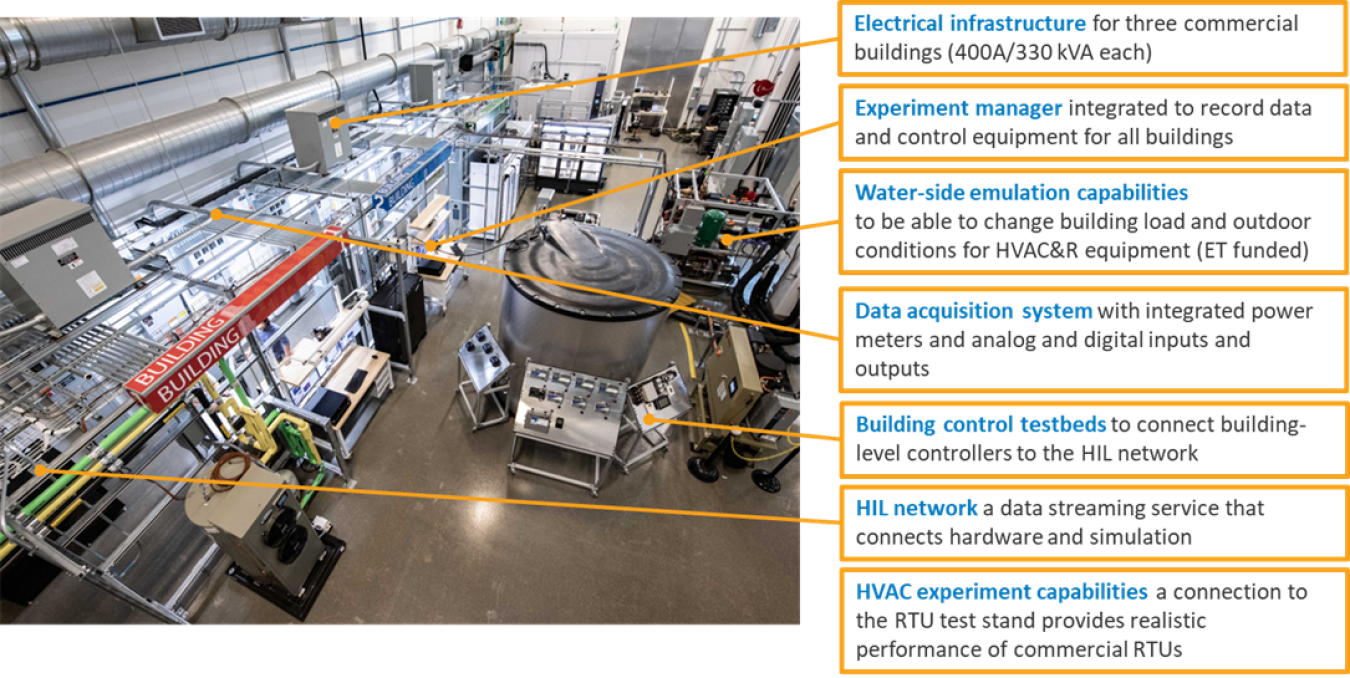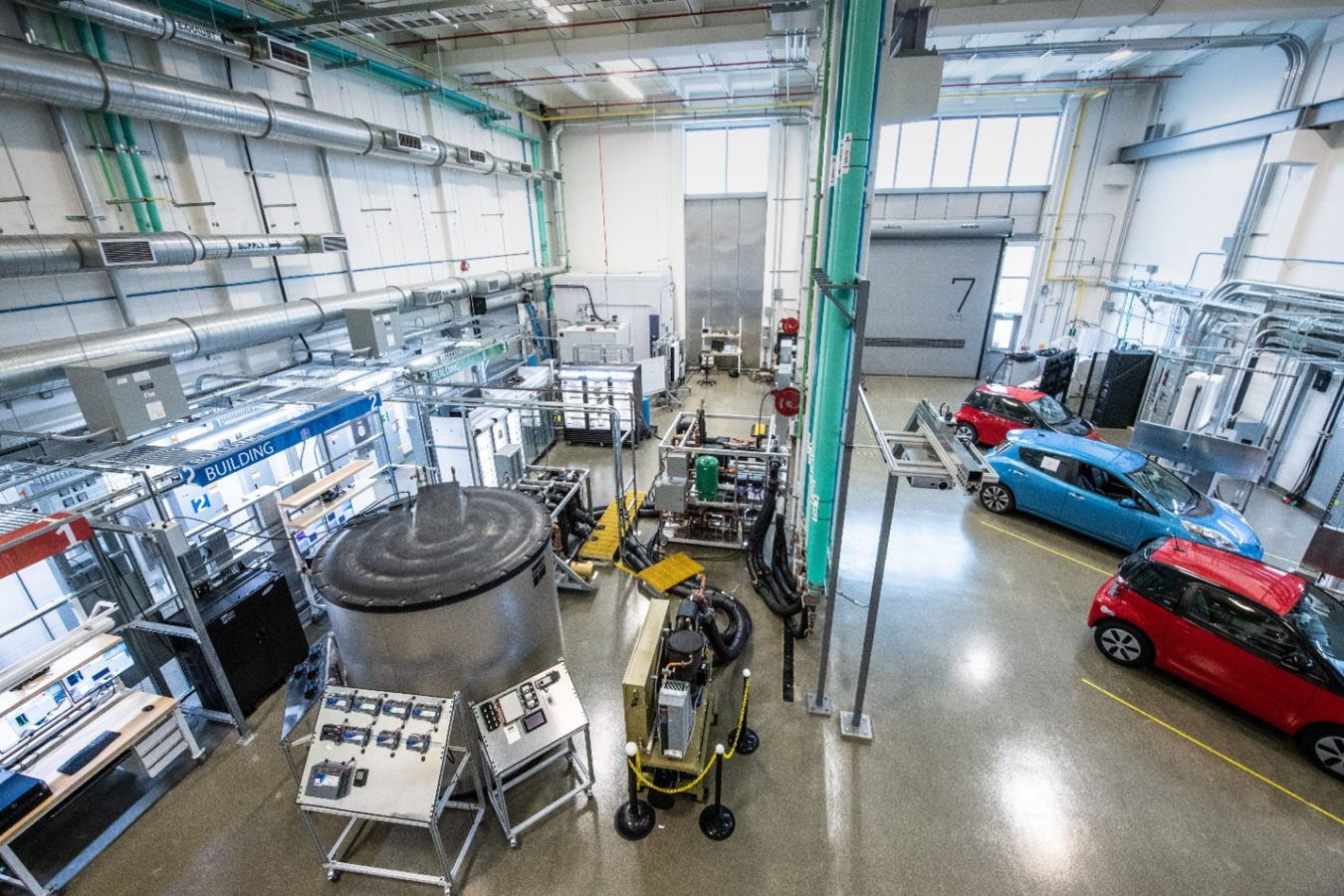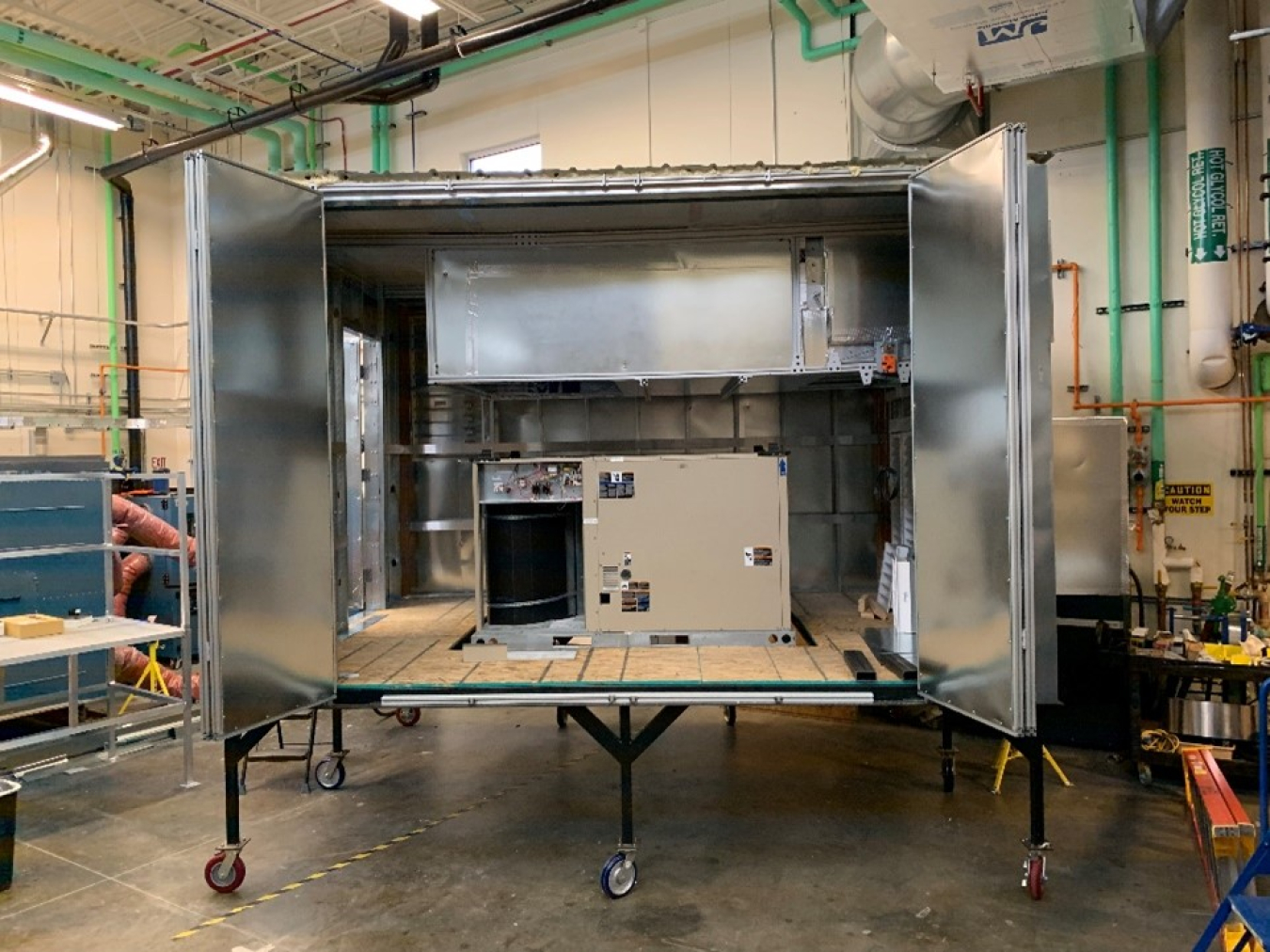Lead Performer: National Renewable Energy Laboratory – Golden, Colorado; partners: Emerson Climate Technologies (Sidney, OH), Commonwealth Edison (Chicago, IL), mCloud (San Francisco, CA)
July 24, 2023
Figure 1. The Commercial Buildings Research Infrastructure (funded in part by DOE’s Commercial Buildings Integration program) was built to develop and evaluate GEB technologies. The infrastructure provides a platform for researchers to use up to three commercial buildings for isolated or combined experiments. The infrastructure is designed to easily accept the installation of physical building technologies and control systems while providing the ability to integrate that hardware into complex simulation software to enable hardware-in-the-loop (HIL) experimentation.
Project Website: https://www.nrel.gov/buildings/infrastructure.html
Lead Performer: National Renewable Energy Laboratory – Golden, CO
Partners:
-- Emerson Climate Technologies – Sidney, OH
-- Commonwealth Edison – Chicago, IL
-- mCloud – San Francisco, CA
DOE Total Funding: $2,300,000 (FY24 proposed additional funds $800,000)
FY23 DOE Funding: $600,000
Cost Share: $1,950,000 (FY24 proposed additional cost share $1,300,000)
Project Term: October 2020–December 2024
Funding Type: Direct Funded
Project Objective
In this project, researchers at the National Renewable Energy Laboratory (NREL) collaborate with industry partners to develop, validate, and deploy commercial building technologies that will provide significant enhancements to energy performance and load flexibility while improving or maintaining building performance (e.g., occupant health and comfort). The success of this project relies on leveraging state-of-the-art experimental facilities, such as the Commercial Buildings Research Infrastructure in NREL’s Energy Systems Integration Facility. This project has three main research, development, demonstration and/or deployment tasks:
- Commercial HVAC and Refrigeration Decarbonization (HVAC&R Decarb): The goal of this task is to evaluate currently available solutions to implement decarbonization strategies through energy savings, electrification, use of alternative refrigerants, and load flexibility for commercial buildings with HVAC&R. Technologies need to be more efficient, as the best decarbonization strategy is using less energy. Further, these technologies need to be more flexible so they can match energy consumption with times of available low-carbon electricity generation.
- Rooftop Unit (RTU) Heat Pump Infrastructure Design-Build (RTUBuild): This task is focused on improving infrastructure at NREL to experiment with cold climate commercial air-source heat pumps. NREL will improve the current RTU chamber in two phases. In phase 1, NREL will redesign the chamber to be able to evaluate RTUs down to 10oF outdoor air temperature. In phase 2, NREL will add active refrigeration to enable experiments to evaluate cold climate RTUs down to -20oF outdoor air temperature.
- RTU Coordination (RTUCo): The objective of this task is to accelerate advanced HVAC technology deployment in the field that provides energy efficiency, carbon emission reductions, and load flexibility benefits. NREL has signed a Cooperative Research and Development Agreement with mCloud to evaluate their RTU coordinator and determine its performance for a building portfolio owner.
Project Impact
With the goals of improving energy efficiency and building flexibility, this project supports the development and deployment of commercial grid-interactive efficient building (GEB) technologies in support of the larger vision of a more robust and sustainable grid. Results of this project will be provided to industry through technical reports, journal articles, and other industry outreach.
Contacts
DOE Technology Manager: Hannah Debelius
Lead Performer: Grant Wheeler, National Renewable Energy Laboratory
Related Publications
Alex Bulk, Grant Wheeler, and Ramin Faramarzi. 2023. Performance Evaluation of Liquid-Cooled Open Stand-Alone Refrigerated Cases. Golden, CO: National Renewable Energy Laboratory. NREL/TP-5500-81945. https://www.nrel.gov/docs/fy23osti/81945.pdf
Grant Wheeler, Ramin Faramarzi, and Juan Catano Montoya. 2023. “Laboratory Assessment of Load Flexibility Strategies in Open Vertical Refrigerated Cases.” Seminar 20; Session 32725: 2023 ASHRAE Winter Conference.
Wheeler et. al. 2022. Efficient Refrigerated Display Cases - Can They Flex Their Power? Preprint. Golden, CO: National Renewable Energy Laboratory. NREL/CP-5500-82475. https://www.nrel.gov/docs/fy22osti/82475.pdf
Amy Jiron and Grant Wheeler. 2021. “HVAC&R in Supermarkets, Untapped Potential for Utilities.” 15th Rocky Mountain Utility Exchange.
Stephanie Johnson and Grant Wheeler. 2020. “Effective Evaluation of Efficient and Flexible Building Technologies for Utilities.” 14th Rocky Mountain Utility Exchange.
Stephanie Johnson and Grant Wheeler. 2019. “Commercial Buildings Research Infrastructure: A Sandbox for Utilities and Building Owners to Evaluate Traditional Energy Savings and Other Non-Traditional Benefits.” 13th Rocky Mountain Utility Exchange.
Grant Wheeler. 2019. “Commercial Buildings Integration Laboratory”. BTO Peer Review. /eere/buildings/downloads/commercial-buildings-integration-lab

Figure 2. The Commercial Buildings Research Infrastructure is located next to two additional infrastructure installations including behind-the-meter storage (funded in part by DOE’s Emerging Technologies program), and the Electric Vehicle Grid Infrastructure (funded in part by the Vehicle Technologies Office). Together, these three infrastructures provide an ideal location to develop and evaluate GEB technologies, allowing for research focusing on commercial building loads, storage, and electric vehicles.

Figure 3. This AOP also funded the development of a dynamic commercial rooftop unit testbed. Compared to typical psychrometric or environmental chambers, this testbed was specifically designed for dynamic and realistic control of an RTU. For example, this RTU can use its economizer to condition based on its control algorithms. This testbed was built leveraging previously installed NREL infrastructure providing a unique experimental capability for GEB HVAC technologies.

